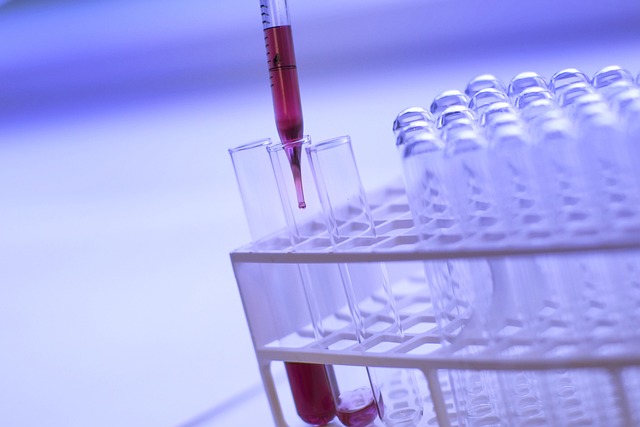
A TG tube (Transgastric Tube) allows feeding through the stomach of patients suffering from malnutrition due to the inability to consume or digest food properly. These tubes are imperative in the provision of nutrition to life-threatening or even recovery ailments that seem to be primarily affecting the digestive system. The article will explore every detail of TG tubes, their use, and storage and care management of TG Tubes.
What is a TG Tube?
A Transgastric tube, also known as a TG tube, is a flexible feeding tube that is invasive and implanted through the abdominal wall but reaches the patient’s stomach. This type of feeding tube is often
Understanding TG Tubes: Purpose and Design
How Does a TG Tube Work?
This is especially beneficial for patients suffering from neurological disorders or digestive problems, or individuals who have had surgical procedures that affect the mouth or throat and cannot take any food by mouth.
The Function of a TG Tube
- Methods of Providing Nutrition: Tube feeding is a process by which liquid food is delivered directly to the patient’s stomach without engaging him or her to put any food in the mouth.
- Methods of Administering Medication: Likewise nutrition, medications are also provided through the tube, enhancing the comfort of these patients with problems in the delivery of treatment.
How It Supports Patient Health
An individual always has to eat with the help of a gastric tube, which we also call a TG tube. Such feeding is crucial for the functioning of the body, stimulating recovery and providing wellness, especially during extended periods of illness.
When is a TG Tube Used?
Healthcare providers use a TO gastronomy tube to provide nutrition to patients with specific clinical conditions when other feeding methods are not viable.
Knowing the principles and use of this tube is important for the family and other caregivers for sound decision-making.
Medical Conditions That Require TG Tubes
- Control of Swallowing Difficulties: Diseases such as stroke or other neurological conditions that influence the ability to swallow.
- Intractable Vomiting or Nausea: Conditions such as Crohn’s disease or advanced gastroesophageal reflux might require a gastric tube.
- Post-Operative: Patients who have undergone an operation on the abdomen, especially on the intestines will use a gastric tube to feed.
Benefits of Early Use
The timely placement of a TG tube is beneficial in averting malnourishment and assists in the healing process of the patient, thus cutting down on the duration of hospital hospitalization and enhancing the overall results.
Benefits of Using a TG Tube
There are countless needs for a TG tube which in most cases means the difference between life and death. These needs draw attention to why patients who cannot eat on their own, should be properly fed.
Key Benefits Explained
- Optimized Nutritional Ingestion: The directed advantage is the administration of and access to nutrients in a target-focused manner.
- Minimization of Aspiration Risk: In the case of patients who have swallowing difficulties, the use of TG tubes limits the chances of food getting to the lungs.
- Faster Recovery Rates: Patients who are provided with sufficient and timely nutrition recover from operations and serious illnesses quicker.
Long-Term Advantages
In chronic situations, the use of such devices promotes the retention of muscle, energy, and general health hence bettering the standard of living greatly.
How to Care for a TG Tube
The appropriateness of care and maintenance of a TG tube is very important to avoid any complications especially those due to infection or blockage. Adhere to the following recommendations for everyday and general care.
Daily Care and Hygiene Practices
- Cleaning the Insertion Site: Use mild soap and water to clean around the insertion site. Drying is important in this process to avoid the risk of infection.
- Flushing the Tube: Always flush the tube with warm water before And after feeding or introducing medication. This assists in maintaining the patency of the tube.
- Inspect for Signs of Infection: Check if there is any redness, tenderness, or purulent discharge from the tube site. In these cases, medical help should be sought.
Troubleshooting Common Issues
Blockages: In case a tube is unable to deliver fluids or medication, gently flush the tube with warm water. Do not attempt to force it as this may cause a breach in the tube.
Leaks: Assess for leakages and check for fastening. If this is ineffective, a healthcare provider will be needed.
Safety Tips: Equipment should always be clean and the tube only touched after a thorough handwashing to maintain dryness and prevent complications.
Steps for TG Tube Insertion
It should be noted that the placement of a TG tube is an operation that is done in a sterile environment. This knowledge helps in minimizing the worries of the patient and the attendant.
What to Expect During the Procedure
- Pre-operational Preparations: This entails sterilization of the site to be operated on as well as channeling anesthesia into the patient.
- Insertion Process: The practitioner makes a small incision on the abdominal wall and the tube is guided into the stomach.
Precautions and Post-Care Instructions
Some little pain may be felt by the patients, but with the right care and medicine, pain can be reduced. Follow-up consultations will be required following the placement of the tube.
Best Practices for TG Tube Feeding
Feeding a patient through a TG tube takes complete mastery of technical aspects and observance of operational protocols to guarantee patient safety and comfort.
Tips for Safe and Effective Feeding
Optimal Body Use: Reposition the patient during feeding to a seated position and allow them to remain in that position long after eating to protect them from choking risks.
Using The Appropriate Formulation: Consult with a nutritionist who will help in using the appropriate liquid food formulation. Alter the composition as necessary, in order to fulfill the patient’s dietary needs.
Phase Doses: Give food at intervals to avoid bloating and discomfort.
Professional Responsibility: All feeding utensils must be cleaned in the autoclave, and symptoms of intolerance vomiting, or diarrhea should be looked out for.
Common TG Tube Complications and Troubleshooting
Even when provided with the most appropriate treatment, complications may occur. Understanding how to resolve these problems can help avert potentially dire outcomes.
Identifying and Managing Complications
- Blockages: All forms of blockage can happen but regular flushing of the tube can eliminate this problem. In the event of such a problem, warm water flushing usually works well too.
- Infections: Ensure that the site of insertion remains clean and dry at all times. Antiseptic solutions may be for this purpose but do consult the doctor about any infection signs.
- Displacement of the tube: If at any time the tube is misplaced or comes off, ensure that the site is stabilized and the patient is attended to right away.
When to Seek Emergency Help
When experiencing severe pain, persistent vomiting, or allergic reactions, do not hesitate to seek medical help as quickly as possible.
FAQs
How does a doctor insert a TG tube?
A doctor inserts a TG tube through a small incision in the abdominal wall, using sterile techniques to guide the tube into the stomach.
This procedure involves a doctor using sterile techniques to place a feeding tube inside the stomach through an incision made in the abdominal wall.
How do you care for a TG tube?
The basic first aid treatment comprises taking proper care of the tube feeding site such as cleaning the site on a daily basis, flushing the tube to reduce the risk of block and infections as well as monitoring any other signs and symptoms that may indicate an infection.
What are common complications with a TG tube?
Some complications might include blockage, infection, and dislodgement of the tube. However, regular care and timely intervention of issues can avert advanced complications.






